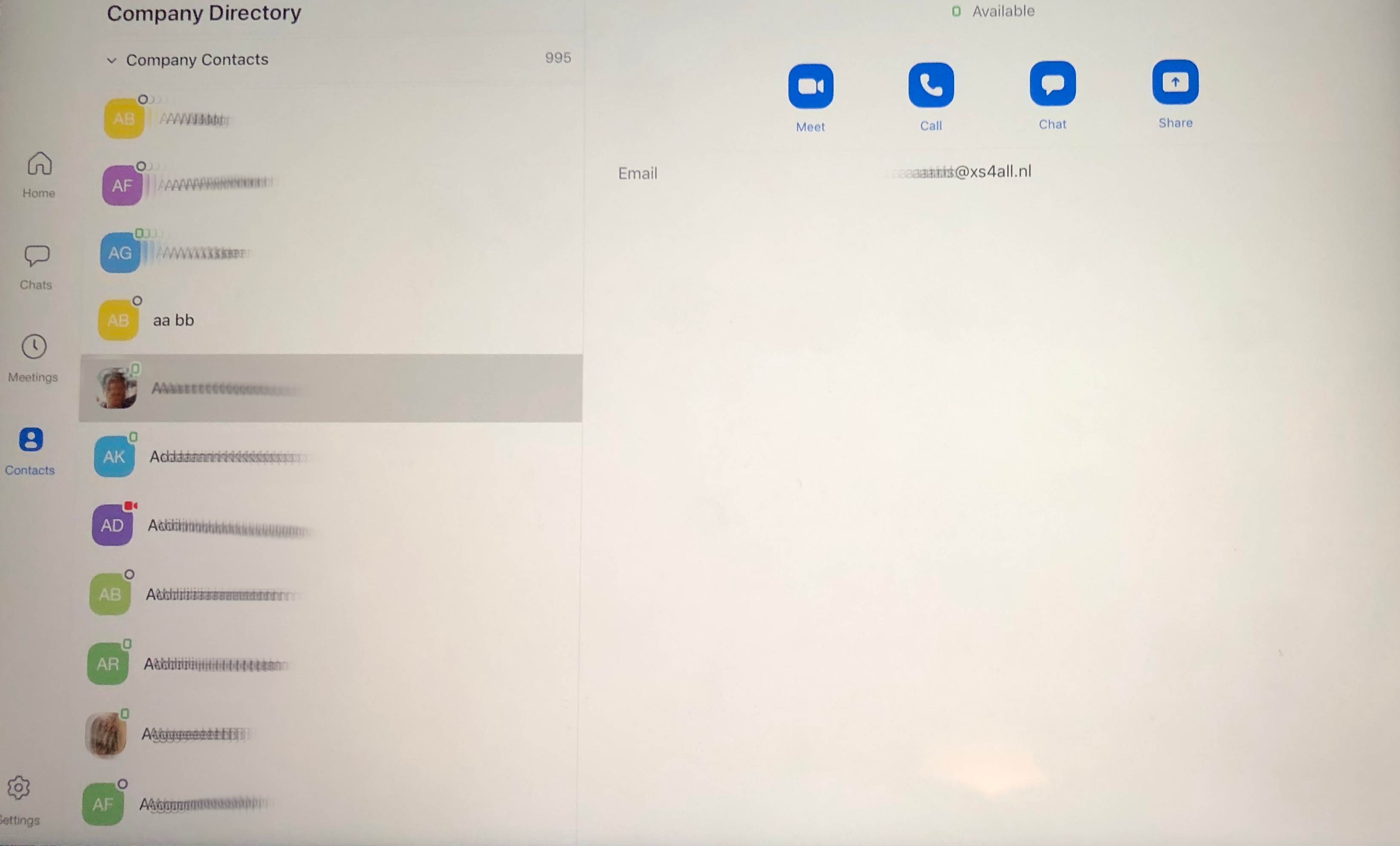Popular video-conferencing Zoom is leaking personal information of at least thousands of users, including their email address and photo, and giving strangers the ability to attempt to start a video call with them through Zoom.
The issue lies in Zoom’s “Company Directory” setting, which automatically adds other people to a user’s lists of contacts if they signed up with an email address that shares the same domain. This can make it easier to find a specific colleague to call when the domain belongs to an individual company. But multiple Zoom users say they signed up with personal email addresses, and Zoom pooled them together with thousands of other people as if they all worked for the same company, exposing their personal information to one another.
Videos by VICE
“I was shocked by this! I subscribed (with an alias, fortunately) and I saw 995 people unknown to me with their names, images and mail addresses.” Barend Gehrels, a Zoom user impacted by the issue and who flagged it to Motherboard, wrote in an email.
Gehrels provided a redacted screenshot of him logged into Zoom with the nearly 1000 different accounts listed in the “Company Directory” section. He said these were “all people I don’t know of course.” He said his partner had the same issue with another email provider, and had over 300 people listed in her own contacts.
“If you subscribe to Zoom with a non-standard provider (I mean, not Gmail or Hotmail or Yahoo etc), then you get insight to ALL subscribed users of that provider: their full names, their mail addresses, their profile picture (if they have any) and their status. And you can video call them,” Gehrels said. A user still has to accept the call from the stranger for it to start, however.

On its website, Zoom says, “By default, your Zoom contacts directory contains internal users in the same organization, who are either on the same account or who’s email address uses the same domain as yours (except for publicly used domains including gmail.com, yahoo.com, hotmail.com, etc) in the Company Directory section.”
Zoom’s system does not exempt all domains that are used for personal email, however. Gehrels said he encountered the issue with the domains xs4all.nl, dds.nl, and quicknet.nl. These are all Dutch internet service providers (ISPs) which offer email services.
On Twitter Motherboard found other instances of Dutch users reporting the same issue.
“I just had a look at the free for private use version of Zoom and registered with my private email. I now got 1000 names, email addresses and even pictures of people in the company Directory. Is this intentional?,” one user tweeted last week along with a screenshot.
Dutch ISP XS4ALL tweeted in response to a complaint on Sunday, “This is something we cannot disable. You could see if Zoom can help you with this.”
Do you know anything about data selling or trading? We’d love to hear from you. Using a non-work phone or computer, you can contact Joseph Cox securely on Signal on +44 20 8133 5190, Wickr on josephcox, OTR chat on jfcox@jabber.ccc.de, or email joseph.cox@vice.com.
Dutch ISP DDS told Motherboard in an email it was aware of the issue, but hadn’t heard directly from any of their own customers about it.
“Zoom maintains a blacklist of domains and regularly proactively identifies domains to be added,” a Zoom spokesperson told Motherboard. “With regards to the specific domains that you highlighted in your note, those are now blacklisted.” They also pointed to a section of the Zoom website where users can request other domains to be removed from the Company Directory feature.
Last week, Zoom updated the iOS version of its app after Motherboard found it was sending analytics data to Facebook. On Monday a user filed a class action lawsuit against Zoom for the data transfer. On the same day the New York Attorney General sent a letter to Zoom asking what security measures the company had put in place as the app has sky-rocketed in popularity.
Subscribe to our cybersecurity podcast, CYBER.




